

Damion Smy
Boxy new KGM Musso unveiled to take on HiLux and Ranger ahead of Australian launch
7 Hours Ago
Recently refreshed styling anchors the Series II update of the Suzuki Baleno GL. But is there enough goodness beneath the skin of this price-buster to rate as an ideal ‘my first car’?
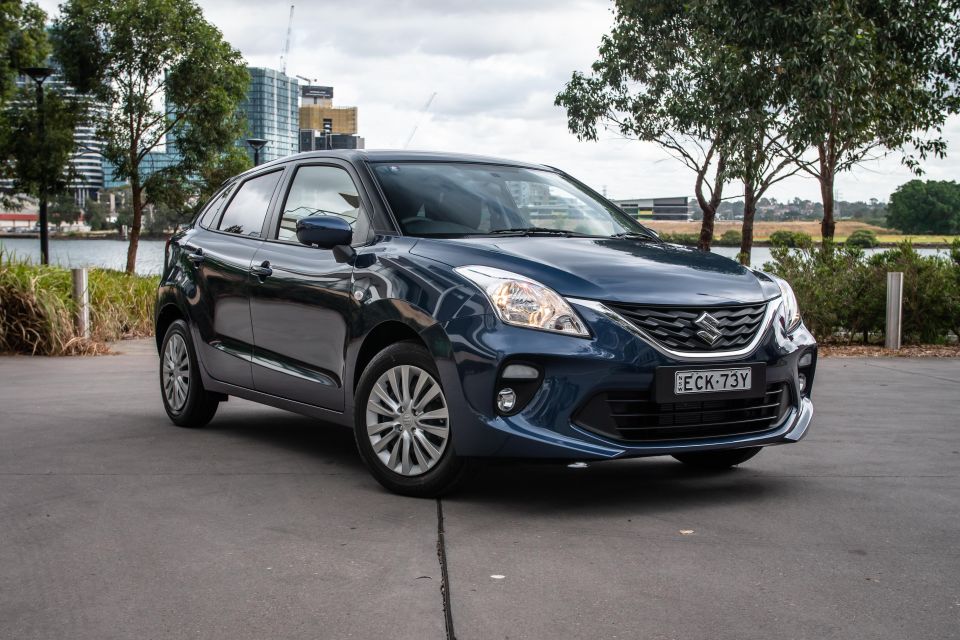
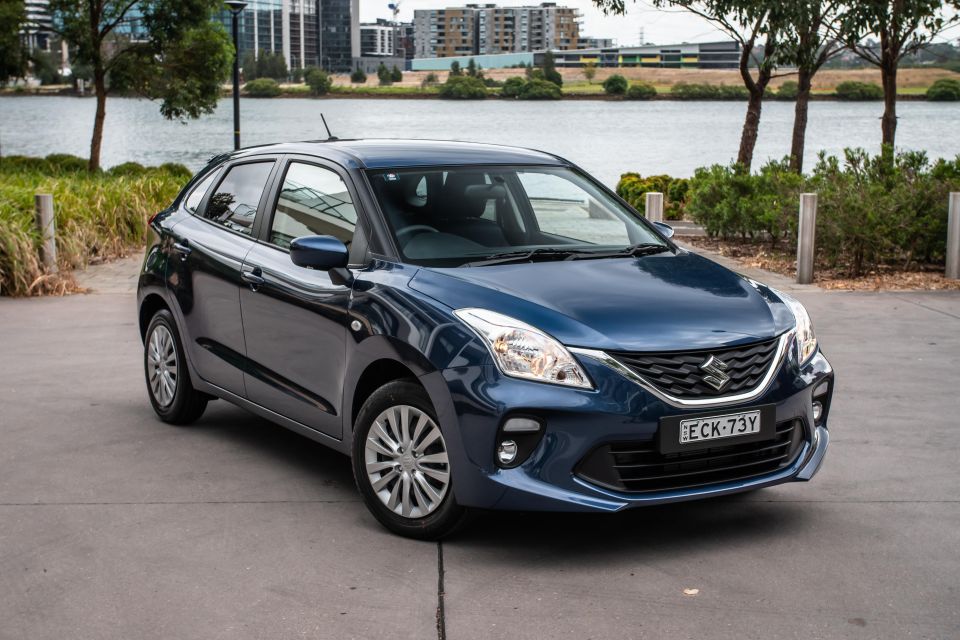

Journalist
New from
$15,705
excl. on-roads

Journalist
New from
$15,705
excl. on-roads


Journalist
New from
$15,705
excl. on-roads

Journalist
New from
$15,705
excl. on-roads
Quickly see how this car stacks up against its competition. Select any benchmark to see more details.
Where expert car reviews meet expert car buying – CarExpert gives you trusted advice, personalised service and real savings on your next new car.
Suzuki hedges its bets by offering two small hatchback lines for fiscally-challenged buyers after a solid first car or cheap grocery getter.
But while the more popular, pricier and mature Swift lures those after a sportier bent, the Suzuki Baleno, updated in late 2019 as a “new” Series II, remains the larger and arguably sounder choice, the all-rounder sat as Suzuki’s mainstay of value for very reasonable money.
The key to base GL automatic version is balance. Series II lightly remodeled front and rear ends, new wheel covers and revised interior trim add a lick of aesthetic shine, but frills understandably remain few and far for a model hedging everything on its thrifty ask.
Success in review here is perhaps more down to depth in the urban runabout experience than it is in frilly and superfluous window dressing.

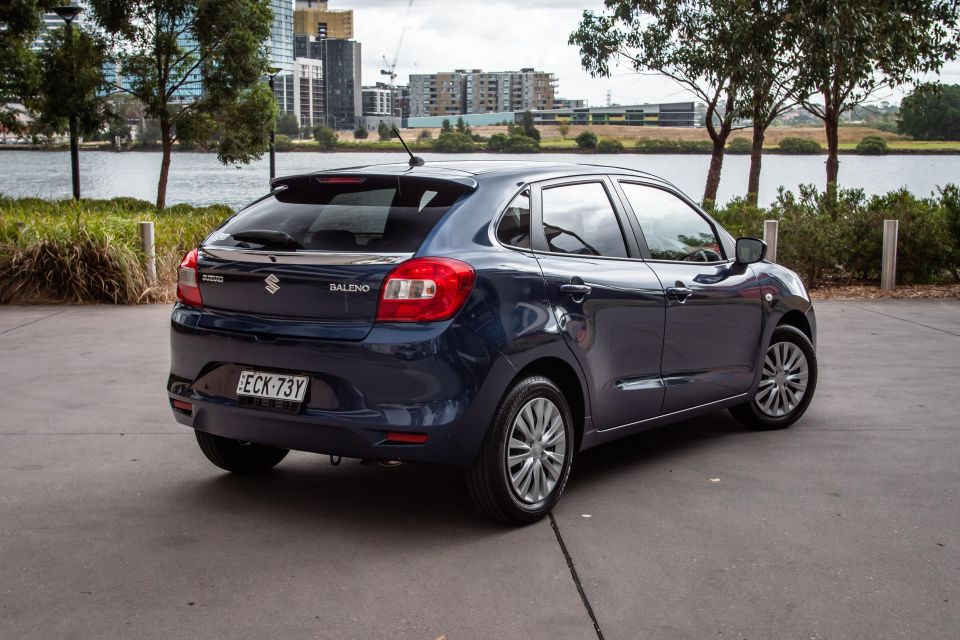
At $16,990 before on-roads, the Suzuki Baleno GL rubs door handles with Honda Jazz, MG 3, Toyota Yaris as amongst the most affordable automatic-equipped hatchbacks on the market.Add Kia Picanto to that posse if diminutive size and reduced practicality is no deterrent.
You can save a grand opting for a five-speed manual rather than the four-speed conventional auto fitted to our test car – Suzuki is even offering the manual at a smoking $15,990 driveaway at the time of writing.
There are two variants in the Suzuki Baleno range and you’ll need to stump up an extra if not necessarily excessive $2000 for the bells and whistles GLX variant, which only comes in automatic form.
There are five colours to choose from: standard Arctic White or Fire Red with a $500 premium ask for Granite Grey, Premium Silver or, as featured on our test car, Stargaze Blue metallic.


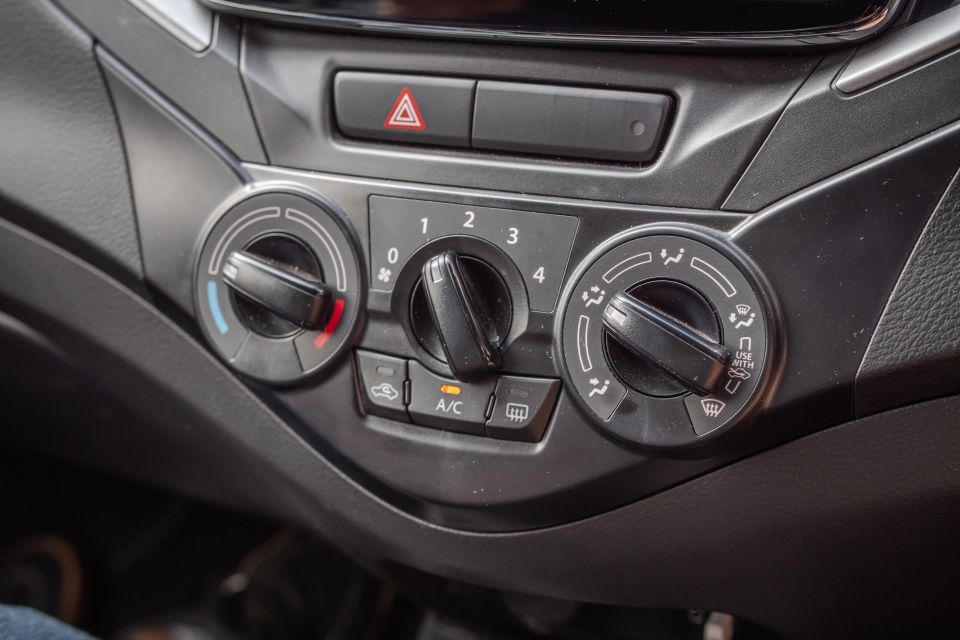
Buy your new car without the stress. It's fast, simple and completely free.

Great service from Travis and team, second time I have used this business would not hesitate to recommend them to anyone
Craig C.
Purchased a Ford Ranger in Sunshine Coast, QLD
CarExpert helped Craig save thousands on his Ford Ranger, now let us save you on your next new car.
Find a dealMost of the specifications are typical budget-conscious hatchback fare: a solid selection without many shortcomings and a few delights sprinkled on top.
The base GL gets 15-inch steel wheels, power windows, privacy glass, electric mirrors, a leather steering wheel, cruise control, a reversing camera, automatic halogen headlights, a space-saver spare wheel, single USB and dual 12-volt outlets and the predictable fabric seat and manual air-con format.
Punching above its weight is the 7.0-inch touchscreen infotainment system, featuring both Apple CarPlay and Android Auto together with its own proprietary satellite navigation to supplement the usual Bluetooth phone and audio streaming, and MP3 connectivity.
Cost cutting? Absent from the GL menu are rear parking sensors, digital radio and strangely, unlike the GLX, there’s no steering wheel reach adjustment. LED projector headlights and alloy wheel are also exclusive to the flagship version.
The Suzuki Baleno GL goodies swag might favour some buyers more than others – many would swap the sat-nav for a nice set of GLX-spec alloys – but overall it’s a well-conceived suite of gear tailored to wide variety of owner tastes.
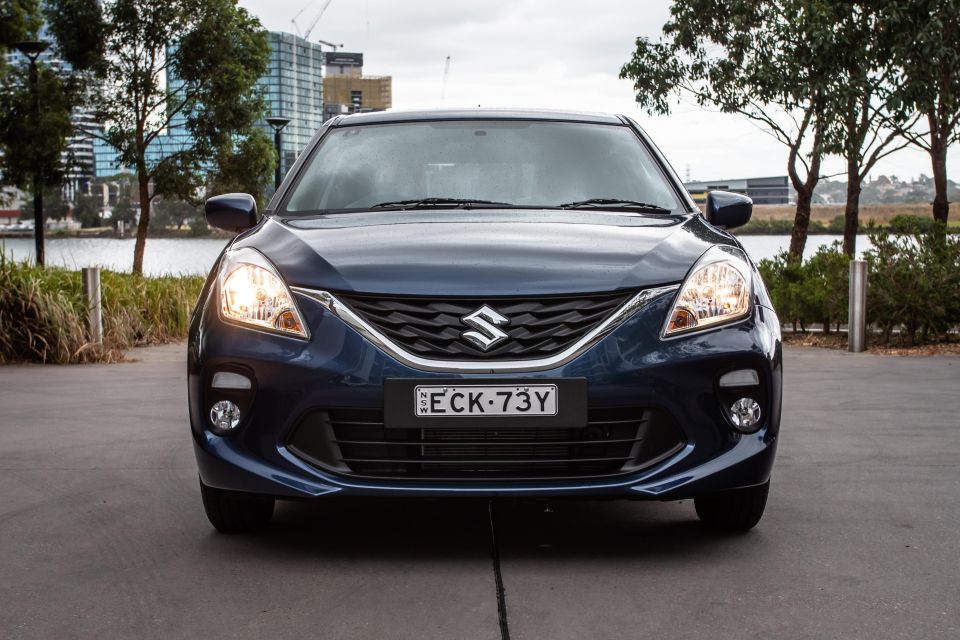
Safety credentials are…questionable.
There’s no autonomous emergency braking. That’s a big markdown. With the lack of primary active AEB safety and much in the way of any support system such as blind-spot monitoring (let alone lane keeping), it’s of no wonder that the Baleno has thus far avoided ANCAP testing and remains unrated (unlike most of the rest of the Suzuki range).
You do get six airbags (front, side and curtain) as well as ABS and stability control as sort of minimum requirement. But it’s a below-par effort for modern motoring and this heavily impacts the Baleno’s recommended suitability as ‘my first car’.
At a remarkably light 915kg kerb weight for its size, it’s hoped its touted TECT construction placed enough metal in the right places for adequate crash protection.
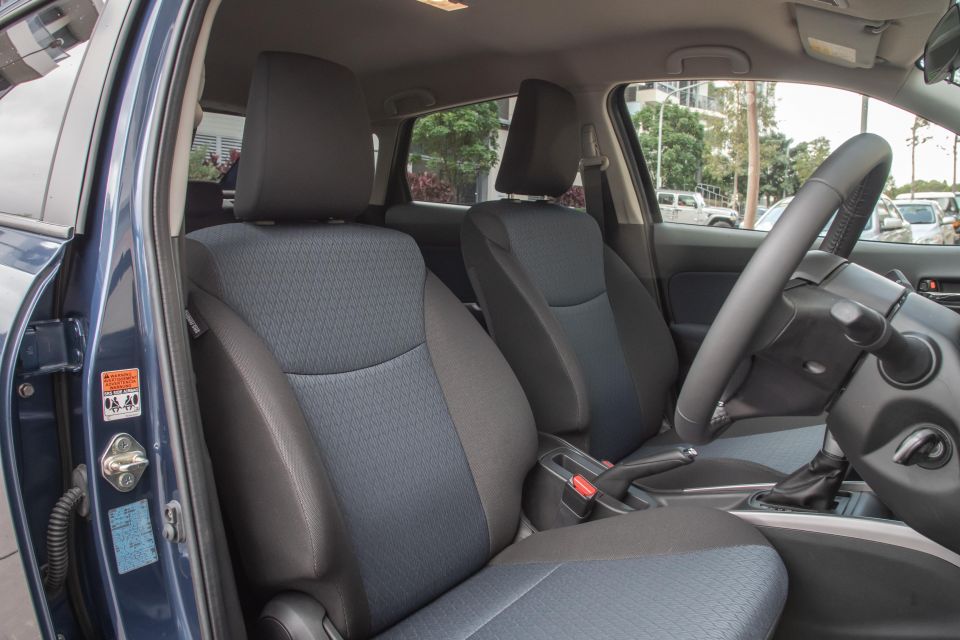

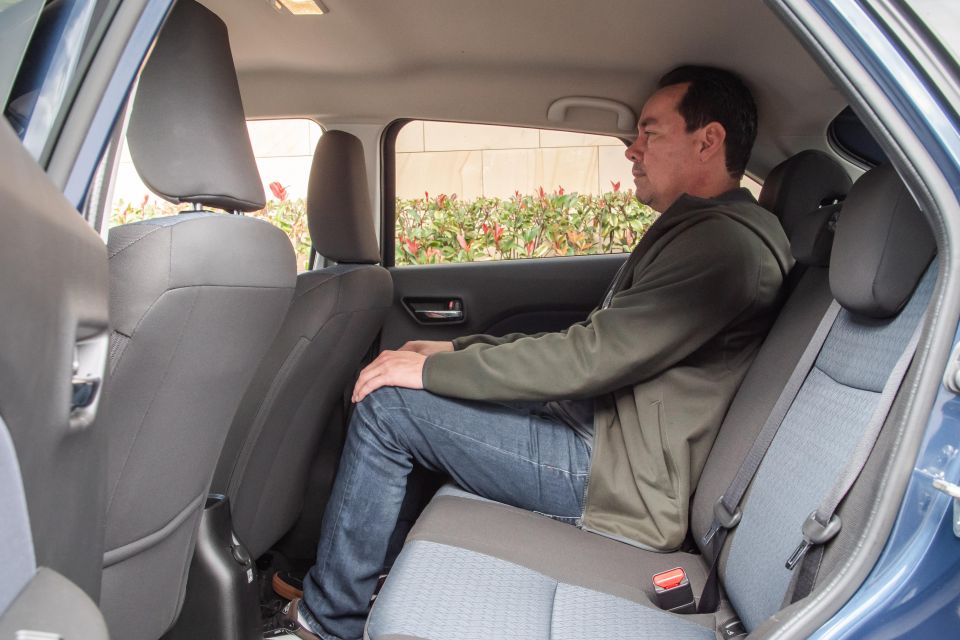
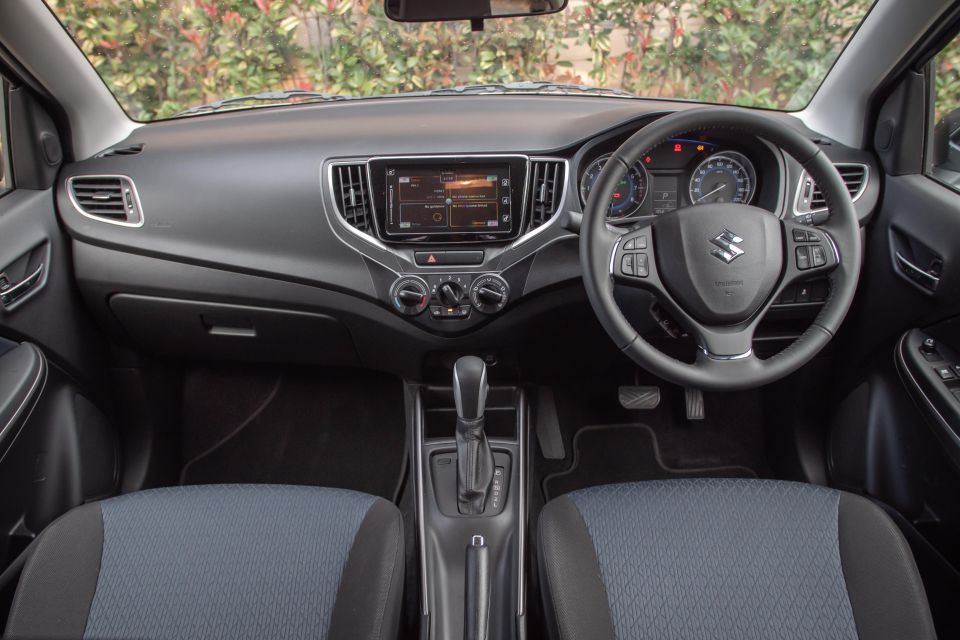
The first thing that strikes you about the cabin is how roomy it is. It’s nice and airy up front, comfortable by most measures for two adults in back, where I found there to be ample knee and head room for my near 180cm-tall frame and there’s decent elbow room, though the lack of an actual fold-down centre armrest smacks of conspicuous cost saving.
One of the largest boot spaces in segment offers a quite respectable 355 litres of luggage capacity, mostly due to the sheer depth of the floor, and available roominess converts to 756L with the 60:40 split-fold rear seat backs stowed. Space and practicality are real Baleno strong points.
It’s a sparse and unremarkable interior, if pleasing enough in a sea of presentable grey plastic punctuated by neat blue ‘mood lit’ instrumentation and blue patterned seat centres and door inserts. The colourful, intuitive 7.0-inch touchscreen display distracts attention from the absence of interior features, such as centre arm rests, even up front.
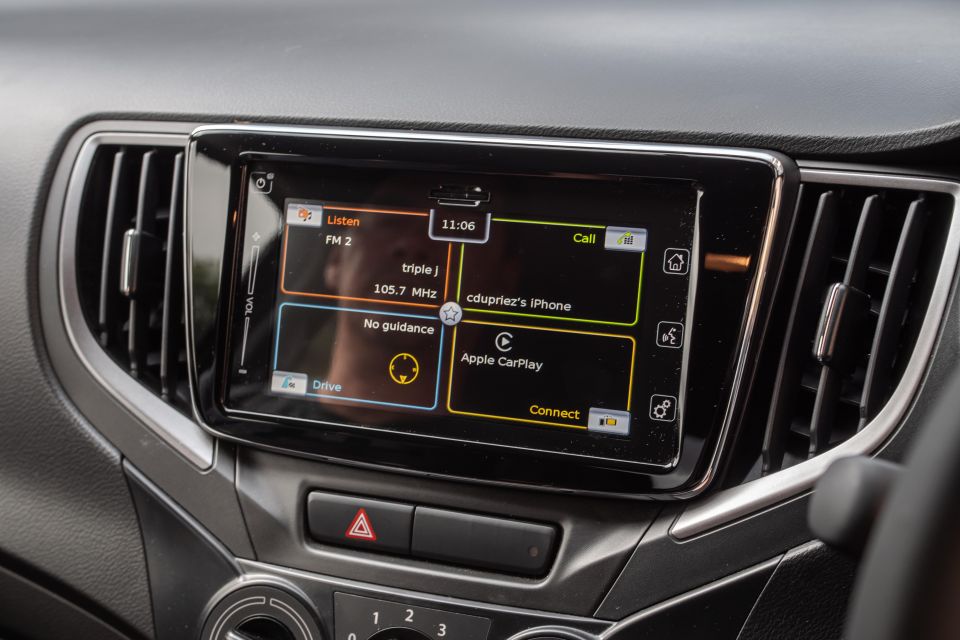
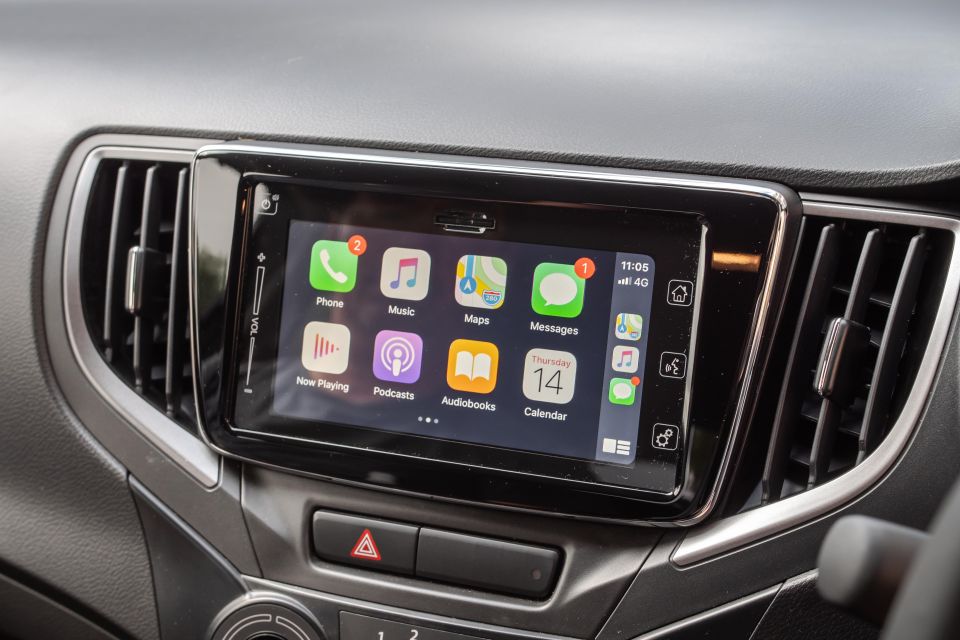
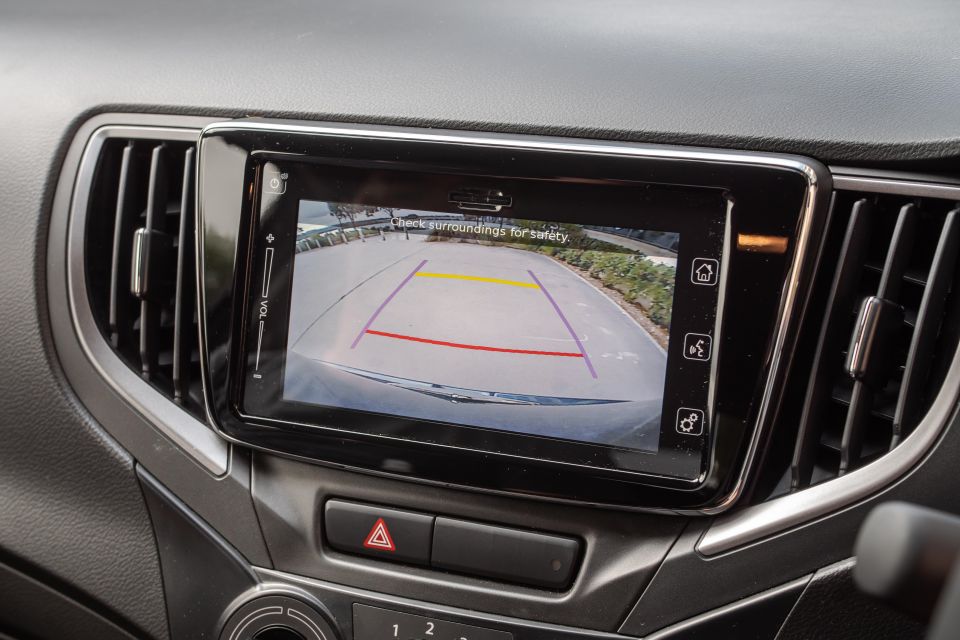
The infotainment system is above par for what’s the shallower end of motoring’s gene pool. Must-have smartphone mirroring works a treat, ditto Bluetooth audio streaming, and it’s quicker and more intuitive than some systems found much further upmarket. While hardly essential fitment, the sat-nav inclusion is nice and the audio quality surprisingly rich in a unit undoubtedly the entire vehicle’s feel-good centerpiece.
A single USB port and 12-volt outlets front and rear are highlights of a fit-out that, oddment cubbies and deep bottle holders in the rear doors apart, lacks anything worth a mention.
That said, the seating in both rows offer shapely support, outward visibility is sound, and for a penny-pinching hatchback the general ambience is pretty decent and welcoming.
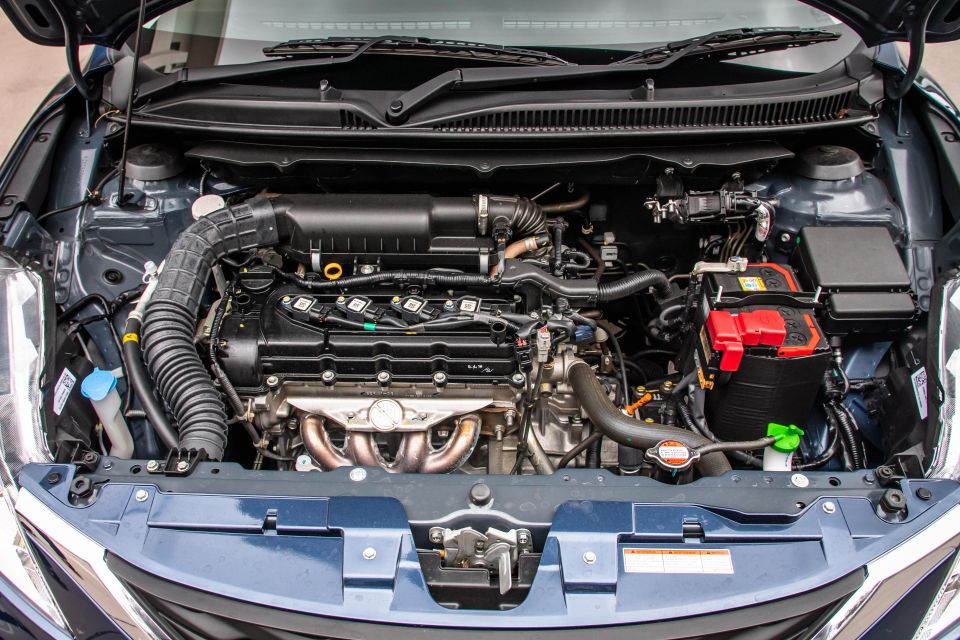
The little 1.4-litre naturally-aspirated four cylinder’s 68kW and 130Nm are modest to say the least. It’s tied to the front wheels via a conventional automatic though it modest four forward ratio count is short of modern convention where contemporary self-shifters generally offer at least six.
It runs on pizza-cutter 175mm-wide ‘economy’ tyres and a happy diet of 91RON fuel for combined consumption claim of a thrifty 5.4L/100km. But either tapping the four pot’s modest spirit or even thinking about utilising the generous cabin space for occupants sees real-world returns in the sevens or worse, if still respectable enough for budget motoring.
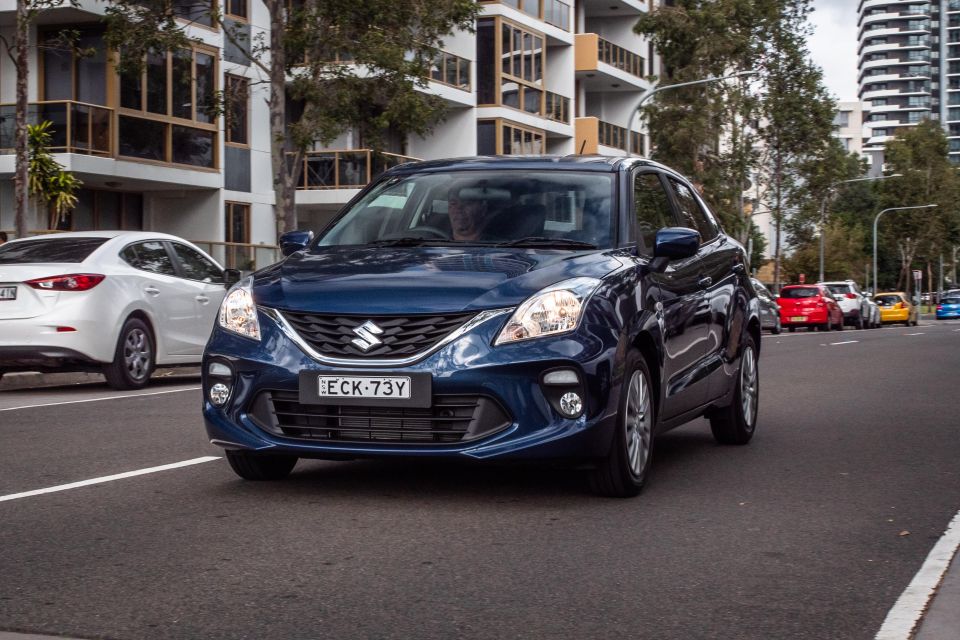
Understandably it’s no rocketship, though the little Suzuki Baleno 1.4 does feel more willing under foot than numbers suggest, aided no doubt by Baleno’s feathery kerb weight. There’s a neat torque hump in the midrange even if it’s generally smooth nature gets raucous once you give it the berries.
That said, its eagerness to acceleration is greatly impacted by how much it’s lugging about and it become noticeably less sprightly the higher the occupant count.
The four-speed auto is reasonably obedient in ‘D’ for drive for balanced around town stuff. The transmission controller also offers ‘2’ (holds second) and ‘L’ (holds first) that are easy to accidentally engage trying to pluck D – a pain for beginner drivers – and an OD Off (overdrive fourth lock-out) button for highway hill-climbing, offering convoluted if somewhat handy options for keeping the little engine on boil in different situations.
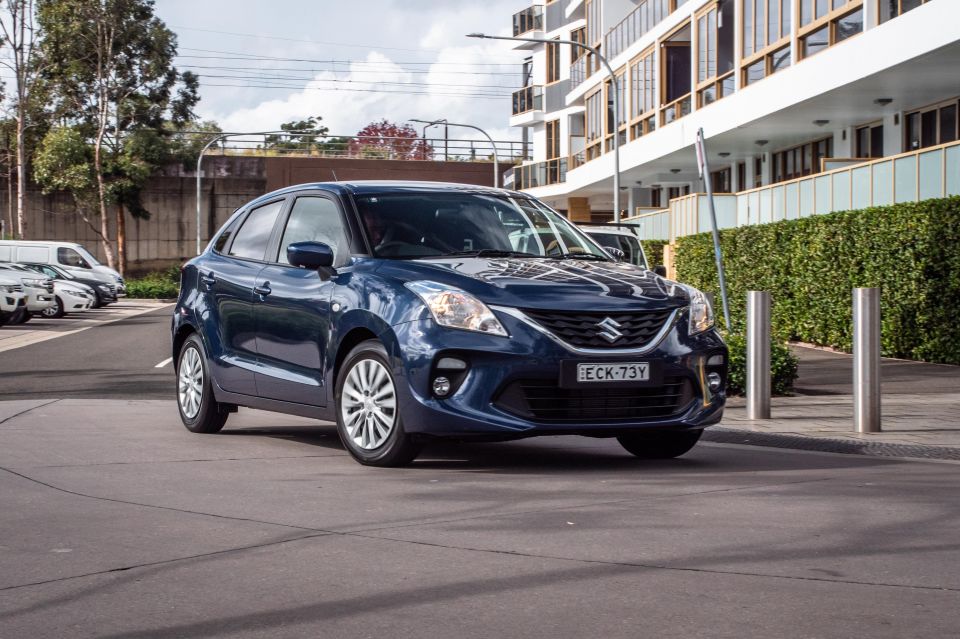
The Suzuki Baleno is a resolved enough drive. Refinement and noise levels are respectable around town though the tyre noise the thumps across road separation joins become quite intrusive on the highway. While the suspension is reasonably firm it’s not overly sharp over speed bumps and it settles quickly at low speeds.
You could even call the chassis a little frisky, such is its taut nature. But while it’s easy to punt and place on the road or into parking spaces, it suffers a bit with somewhat ‘sticky’ steering: there’s not quite enough freeplay in the feel with some refusal to naturally return to centre on the move. Strange.
There are three areas where small improvements could improve the driving experience considerably, particularly for beginner drivers. Rear sensors would make reverse parking easier to judge. Steering wheel reach adjustment would improve driver comfort. And the addition of a digital speedometer would offer safer degrees of transit for both your being and your licence.
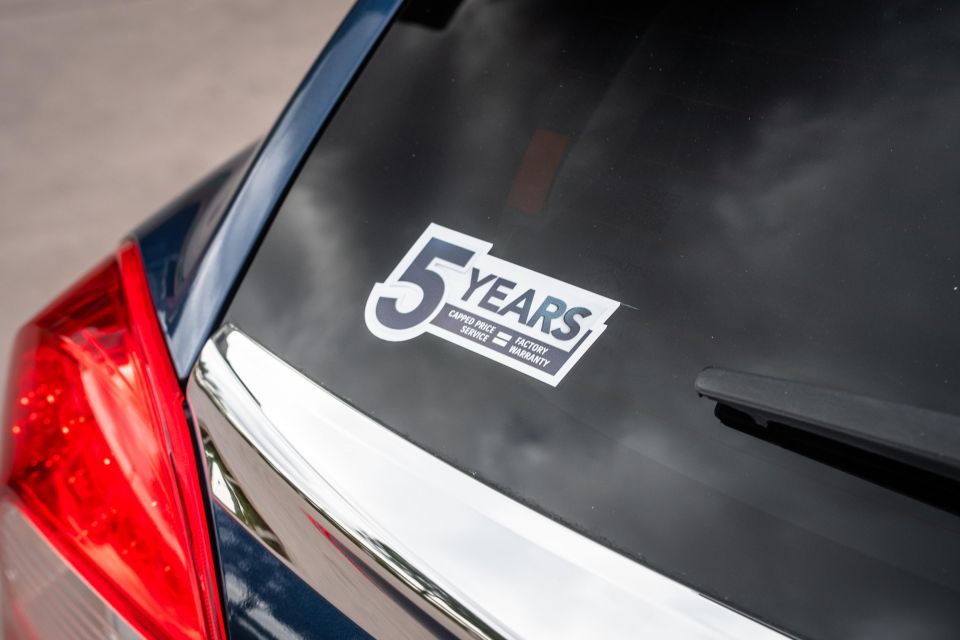
Suzuki offers the Baleno with a five-year, unlimited-kilometre warranty, unless you fancy a bit of paid ridesharing (160,000km cap for commercial usage).
Its capped-priced servicing intervals are 12 months or 15,000kms, whichever comes first, though the program does cover five years and up 100,000km – handy if you’re clocking up lots of kays. Maintain servicing within 60-month/75,000km regularity and the Baleno will cost $1635 over five years, averaging out to $327 per year.
As mentioned prior, it runs happily on regular 91RON fuel.
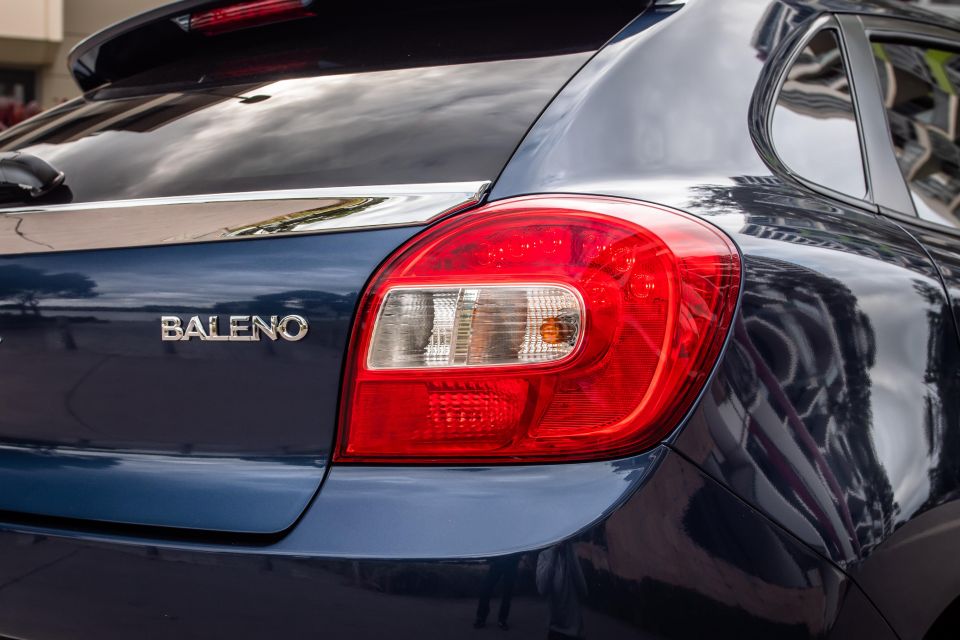
What’s marketed in updated Series II as the “fully overloaded new Baleno” is realistically neither very new nor terribly overloaded for goodies on paper. But the turn the key and point the Baleno GL at unpretentious around town duties and it does a good job of convincing you that it focuses decent qualities in many of the areas required.
Practical, satisfying enough, suitably friendly and utilitarian for a variety of ownership needs, it stacks up to a point where that 17-grand tip in point looks seductive indeed. That is until the topic of safety credentials arises where its significant shortcomings simply can’t be rejected or ignored.
Fact is, culture in some markets such as India – where Baleno is built – focus less emphasis on new-world safety than it does on practicalities. And you don’t have to squint too hard to envisage the small hatch that functions primarily as a surrogate family car in some regions where its overall package is perhaps a neater fit than it is in Oz.
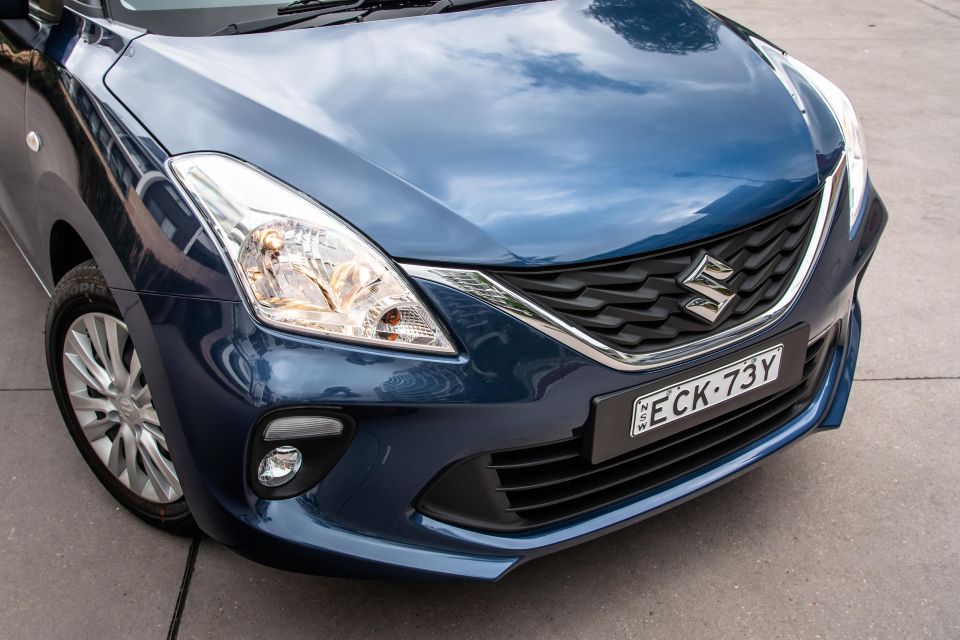
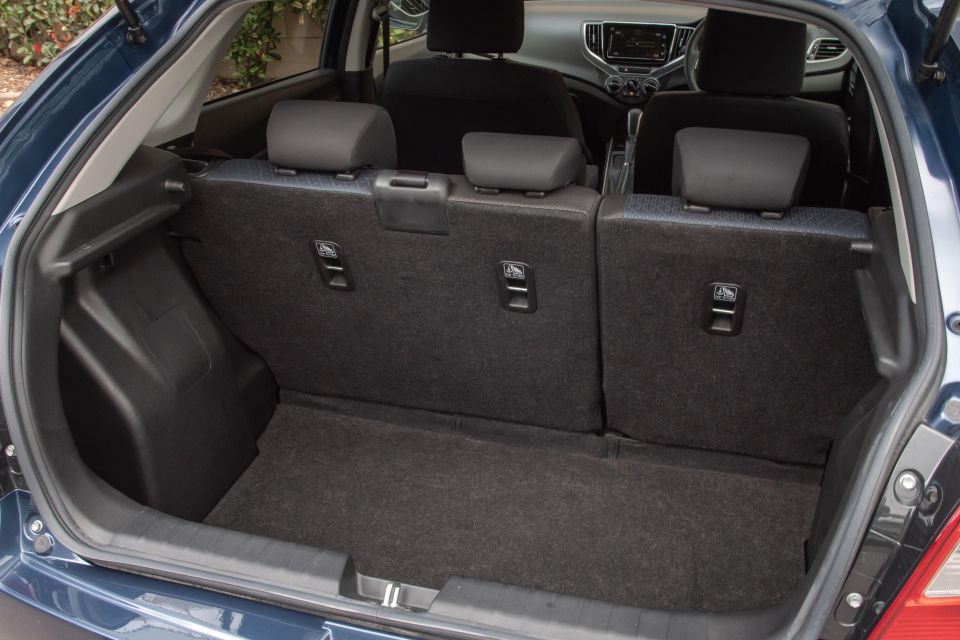
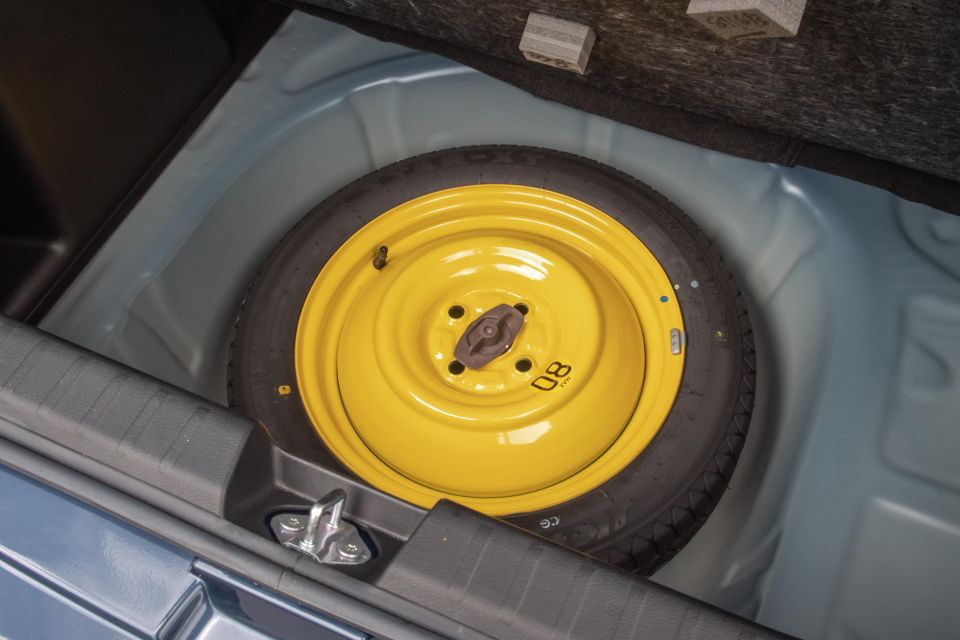
The shame with Suzuki Baleno is that what Australia considers adequate safety features can’t be optioned onto this GL, nor are offered on the top-spec GLX for that extra two-grand outlay.
You may never need AEB safety but without its fitment any vehicle is tough to recommend. Particularly for one positioned perfectly in that ‘my first car’ space.
On this, Suzuki’s AEB-equipped, five-star ANCAP-rated hatchback alternative, the Swift, appears the more fitting candidate for the safety conscious buyer.
Where expert car reviews meet expert car buying – CarExpert gives you trusted advice, personalised service and real savings on your next new car.


Damion Smy
7 Hours Ago


Damion Smy
8 Hours Ago


Damion Smy
10 Hours Ago


Damion Smy
12 Hours Ago


Damion Smy
13 Hours Ago


Damion Smy
14 Hours Ago